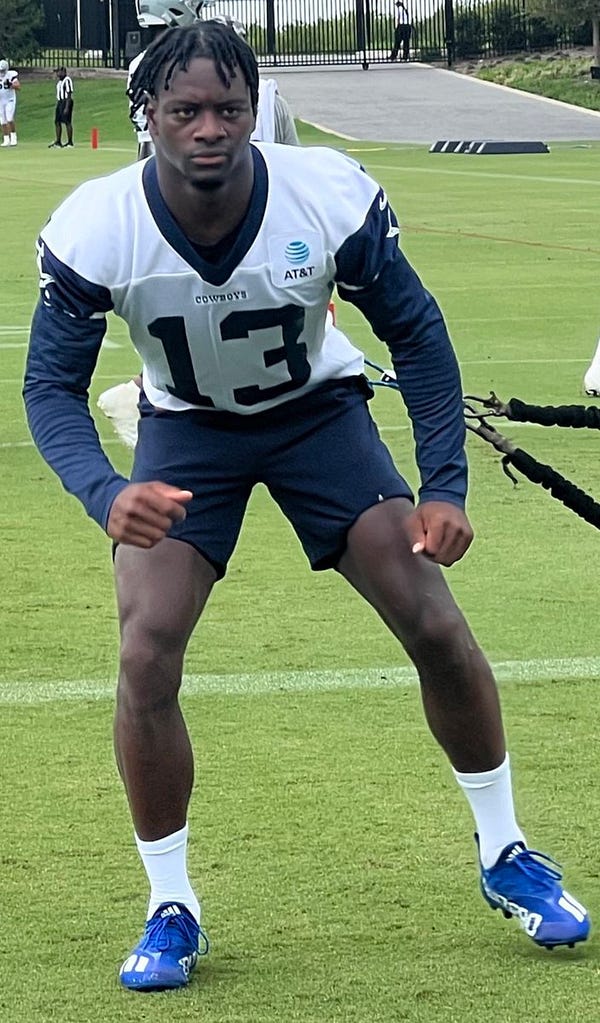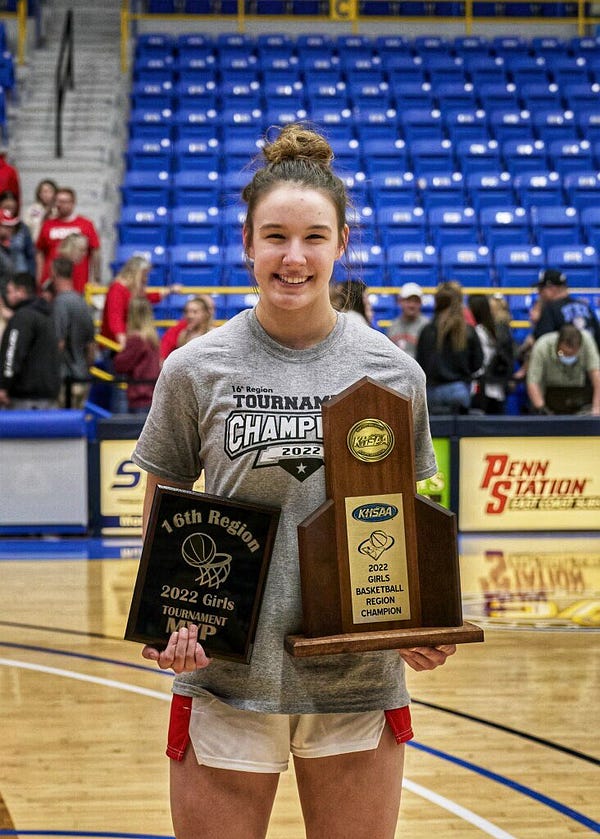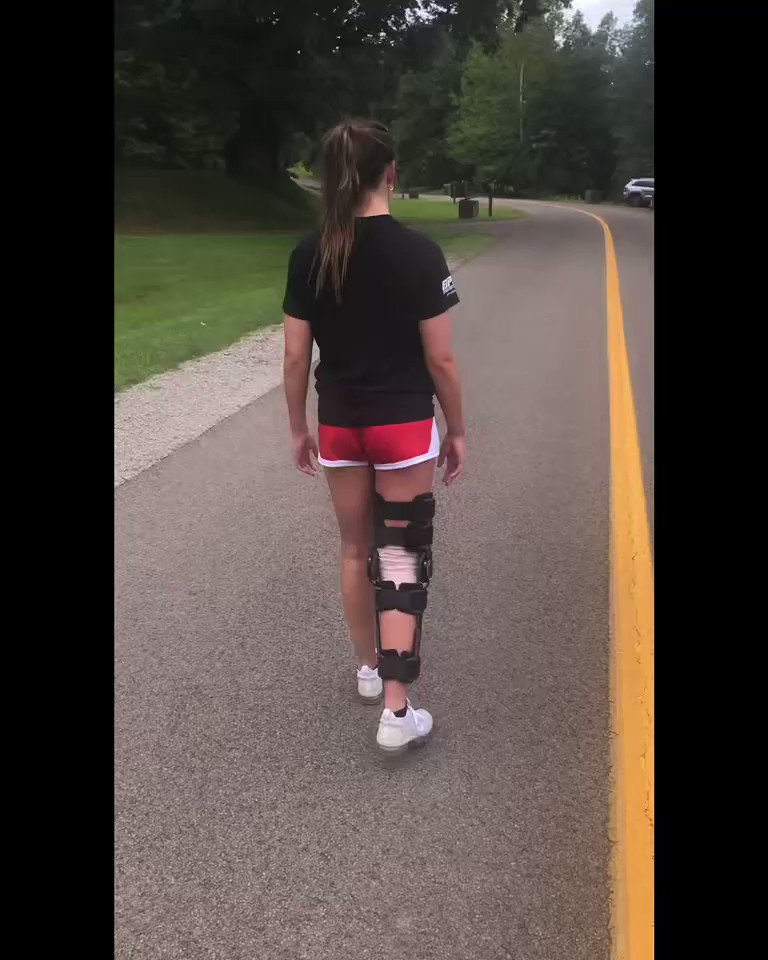When I first came across the work of Dr. Chad Lavender, one of the questions I always got about the Fertilized ACL was “what athletes has he done”? Much in the same way that you can’t give three-year data for a procedure thats two years old, the fact that Lavender didn’t have pro athletes lining up outside his West Virginia office was seen as an insult somehow to those that doubted the procedure.
Lavender instead focused on helping the athletes he could, including some right in his back yard. I spoke with several athletes, high school and college, as well as regular people and even extreme athletes when I was putting together my initial article. Since then, Lavender has shared more of the successes, but one has stood out.
Since injuring her ACL in the summer of 2022, Audrey Biggs has documented the process on social media. Her videos on Twitter have shown the progress, from simple running to the first time back on the basketball court. Now, 170 days after surgery (August 3, 2022), Biggs is getting ready to return to the court, re-joining her high school before her Junior season closes out.
Via email, I asked Miss Biggs what she remembered about the injury itself. “I was playing at an event in Indianapolis with my travel team (WV Thunder),” she explained. “I drove to the basket and got the defender in the air on a head-fake, then as I went back up to the basket to draw the foul, there was a good bit of contact as the defender came down on me. The force of that contact paired with me planting really hard to explode to the rim caused my knee to give at that moment.”
She found herself in the position of far too many female high school basketball players - heading for an ACL reconstruction. However, Biggs knew she had another option, as teammates of hers had gone down this path as well. “ There were a couple of my teammates who had torn their ACL and they used Dr Lavender’s fertilized ACL procedure done,” Biggs told me. “After researching the procedure with my parents and talking with my teammates about their experience with the surgery and recovery time, it was a no brainer to me. During my appointment with Dr. Lavender, he was able to explain the procedure and recovery protocol in further detail, so I knew what to expect going in.”
There’s video below, but Biggs was quickly back in the gym. “I was running at around the 4 week mark and I was back in the gym doing what I could, getting shots up, doing what I could to keep a ball in my hands,” she said. I started taking note of her videos at about Week 5, when she was doing things not normally seen until Month 5 with a standard ACL reconstruction. In the NFL, Chris Godwin returned to play at eight months, with Jameson Williams coming back at ten.
Of course, despite having such a relatively quick recovery, I wondered whether Biggs thought she could have been back even earlier. “I honestly felt like I was ready at the four month mark, but my dad always says everything is in God’s time, so I kept that mindset as I continued strengthening my knee as well as my mind.” Instead, she’ll be back on the court with no restrictions just ahead of the 26-week, 180-day mark.
Dr. Lavender’s current protocol demands that an athlete wait six months before a return and pass return to play protocols. “Our next study is to look at patients like her that progress well and study their biomechanics in depth to search for characteristics which may give us insight into risks of reinjury more than just time or standard functional testing. There is a major lack of evidence and standardization on return to play after ACL and we feel with research we can better define parameters for returning athletes safely,” he explained.
Dr. Tim Hewett, one of the top biomechanists and the author of some key studies on knee rehab, agrees. He’s now at Marshall working with Dr. Lavender, and he told me that these return to play parameters are what he’s working on now. “The risk of re-injury is unacceptably high for young athletes now,” he said. “We need to develop more valid, reliable and reproducible tools to determine readiness to return to play.”
Many will ask, is Biggs just special? Did she work harder or have some genetic advantage? While those are impossible to know, Dr. Lavender says her case is pretty typical. “While no two surgeries or recoveries are the same she was very typical after a Fertilized ACL,” he answered via email. “In our clinical trial patients after this procedure were on average at 80 percent limb symmetry on functional testing at 12 weeks. In her case she was at over 90 percent and progressed from there very well.”
I asked Biggs if she expected to see more athletes choose a Fertilized ACL over a standard, nine-to-twelve month recovery for a standard reconstruction. “Yes, I would expect to see more athletes utilize this procedure and we’ve seen more and more athletes already having this procedure done, not only locally, but nationwide. I would recommend this procedure to any athlete including WNBA players so they would at least be informed on the procedure and recovery, but I would also tell athletes that they must have the right mindset going in because like anything else, it’s really up to you how fast you want to get back on the court. Be sure to find a team of therapists who genuinely care about your recovery and don’t just go through the motions!”
Dr. Lavender agrees. “I am amazed at the spread of this procedure in the last year. There are surgeons across the country who have adopted this and have reported very positive results back to me. At this point we know thousands of patients have been treated with the technique which is very exciting given the short amount of time since we first published the technique.”
Not only are we seeing thousands performed, but the early numbers on the success rates are very positive as well. The worry many had is that there would be a higher incidence of failures that would balance the quicker return. Thus far, that’s not the case, nor is there any suggestion of longer term concerns or reduced ability after return to play.
Biggs documented her rehab process on Twitter and I’ve collected a few highlights here for you to follow along:
Day 10 showed Biggs already on the move:
Some of the earliest videos came at five weeks.
Her father shared an early (Week 7) video.

Here’s a sprint at just eight weeks post-surgery.
Here’s an interesting picture for contrast. This is Cowboys WR Michael Gallup, who was at nine months post-surgery. You can see the difference in his quad size, despite the fact that his quad was uninvolved. For Biggs, her quad tendon was used in the repair and there’s little if any atrophy even early in her process.


Biggs was at twenty weeks in this tweet at Christmas:
And finally …





The next video will come on Friday night, when Audrey Biggs stops being a rehabbing athlete and goes back to being an athlete. Number 23 will retake the floor and continue her career, which is likely to go beyond high school, as she already has several Division 1 offers. Her knee won’t hold her back and I don’t think much else will either.
*The interview with Biggs was edited lightly for flow and content.





This post and it’s accompanying set of videos were very helpful in demonstrating the recovery process in detail; thank you. I hope her game performance goes well.
A question: are these individuals who have undergone this procedure entered into a clinical registry so their long-term progress can be followed?
Dr. Lou Verardo